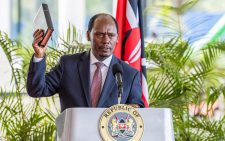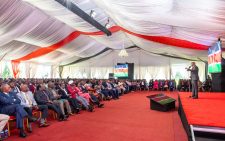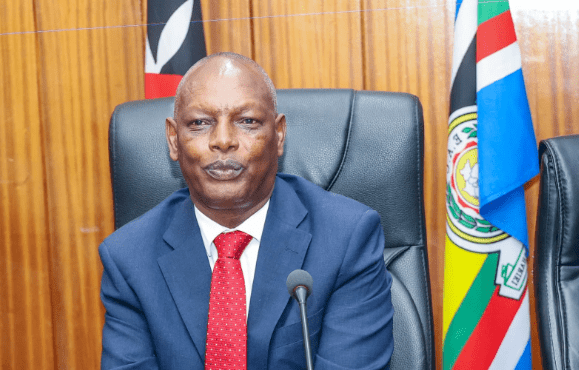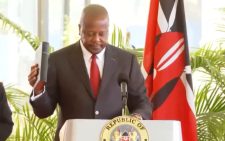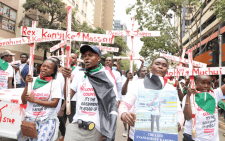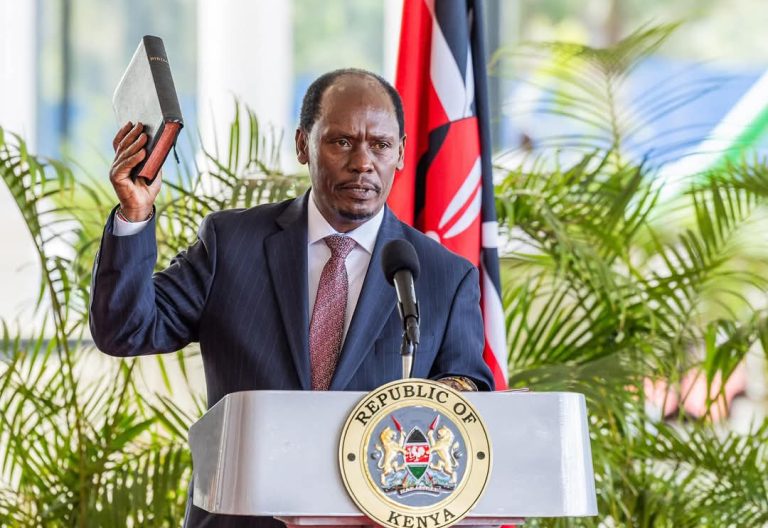New roads upgrade mark city as region trade nerve centre
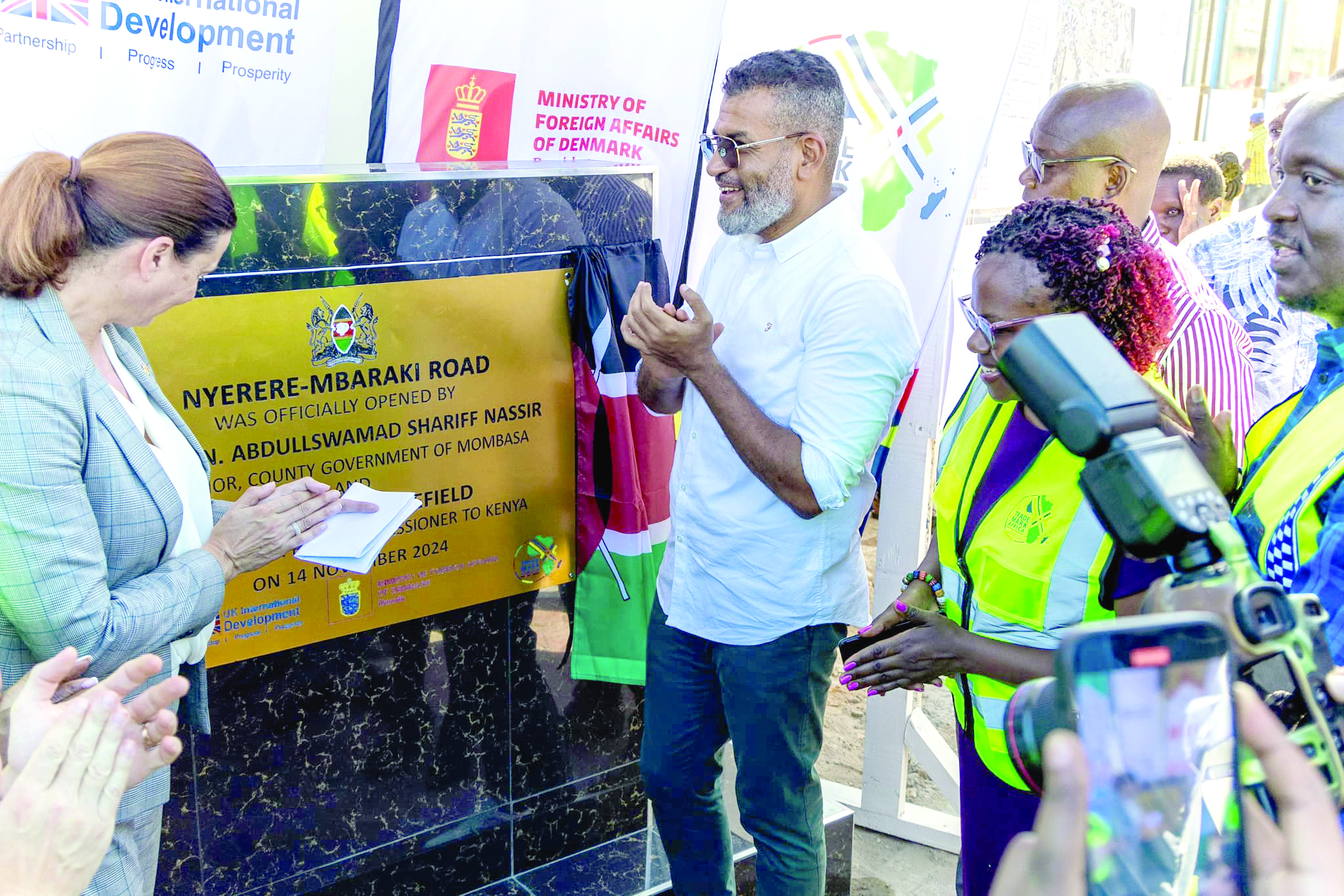
Mombasa City has been handed a game-changing infrastructure upgrade following the opening of the new Mbaraki-Nyerere Road and the Bamburi Drainage Outfall.
The transformative project, borne out of a partnership between the County Government of Mombasa, the United Kingdom Government, and the Royal Danish Embassy—and delivered by TradeMark Africa—has not only alleviated decades of traffic congestion but also elevated the lives of residents and businesses.
For years, Heavy Goods Vehicles (HGVs), the lifeblood of the Mombasa Port, clogged the city’s arteries, stifling productivity and profitability. With this new development, that narrative is being rewritten. The new 1.2-kilometre stretch of road, running from Mbaraki to Nyerere, is now driving growth through trade. It has significantly improved truck utilisation rates and expedited cargo turnaround times at the Mbaraki Terminal, boosting operational efficiency and enhancing the region’s economic prospects.
“The construction of the drain has transformed our school,” the principal of Star of the Sea School beamed, happy that schoolgirls will now focus on their education in a happy and secure setting.
The Star of the Sea School always bore the brunt of poor drainage. The students once waded through floodwaters to reach their classrooms. Now, with the new drainage in place, students can attend school without disruption, enjoying a safe and healthy learning environment.
Mombasa governor Abdulswamad Shariff Nassir was keen to emphasise the broader vision, saying the benefits of the project extend beyond logistics.
“It’s an investment in our people, our economy, and our future. Mombasa is committed to working with global partners to drive sustainable development and strengthen its role as a gateway for regional trade,” said Nassir.
On their part business stakeholders said the road has been a revelation as it has bolstered efficiency in evacuation of cargo.
Local businesses
“We can now transport more cargo efficiently, making clients happier. This is the kind of development we need—high-quality roads that enhance trade,” BossFreight CEO Mohammed Ali said, terming the road a game-changer.
Designed with the community in mind, the road is equipped with wide pavements to ensure pedestrian safety and accessibility for persons with disabilities.
The inclusion of solar-powered streetlights enhances security and sustainability, reducing dependence on the electricity grid. These features, coupled with climate-friendly transport options, underline the road’s commitment to green growth.
The road also links seamlessly to local businesses, markets, and drainage systems, bolstering access to goods and services while fostering economic opportunities.
During its construction, the project directly employed 160 locals, 15 per cent of whom were women. Beyond jobs, the road has delivered cleaner air to Mombasa’s residents by reducing congestion.
At the official opening, Deputy British High Commissioner to Kenya, Leigh Stubblefield, highlighted the power of partnerships.
“High-quality infrastructure that facilitates smooth trade, avoids debt burdens and prioritises community needs is a cornerstone of sustainable growth. The UK is proud to have collaborated with the County Government of Mombasa, Denmark, and TradeMark Africa to deliver this transformative project. We go far when we go together.”
Trade gateway
The regional manager of the Royal Danish Embassy Elma Adwa, also spoke and echoed similar sentiments. The Royal Danish Embassy funded the construction of a 100-metre drainage system, a vital addition that channels water from catchment areas to the Indian Ocean.
This has put an end to the flooding that previously plagued nearby schools and neighbourhoods.
“Denmark is thrilled to have been part of this critical initiative, which is not only driving growth but also improving lives in Mombasa and beyond. We look forward to more projects that streamline trade and enhance community well-being,” Elma enthused.
The port of Mombasa handles 31 million tonnes of cargo annually—a figure projected to rise to 50 million by 2050. As the gateway for trade across East Africa, the port serves neighbouring nations such as Uganda, Rwanda, Burundi, Tanzania, and the Democratic Republic of Congo. The road’s enhanced connectivity is poised to catalyse regional trade, making it a vital asset for the entire region.
TradeMark Africa’s Deputy CEO, Allen Asiimwe, noted that the road is an investment in Mombasa’s economic future.
“We are committed to building resilient infrastructure that promotes green growth and strengthens Africa’s global trade competitiveness.”
